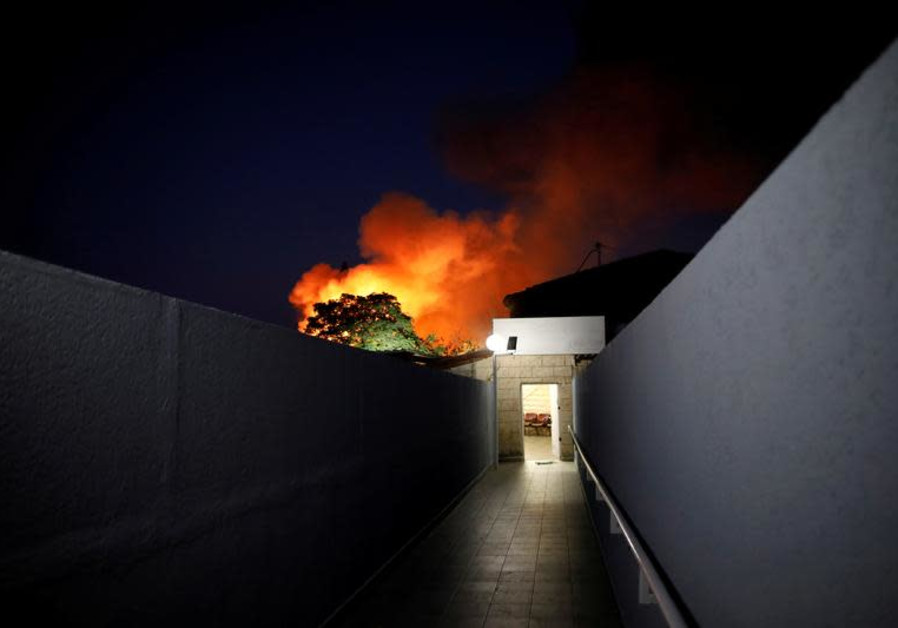Reporter’s Notebook: On the border of Gaza

Flames rise after a rocket attack in Sderot, near the Israeli side of the Israel-Gaza border, November 12, 2018.. (photo credit: REUTERS/AMIR COHEN)
Sirens in border communities along the Gaza Strip sounded throughout the evening long after the sun set on Monday. Amid the rising tensions with Hamas, more than 200 rockets were fired into Israel, some over Kfar Aza, near the northern part of Gaza. From my viewpoint near a gas station, the whole of the northern Gaza Strip was lit up. Rockets fired from the border flew toward Sderot around 8:45 p.m. We could hear and see the booms of interceptions in the distance, but there were no sirens where we were stationed. There were several salvos fired over my head, some rockets heading further inland.
I’ve been in the same spot next to Kfar Aza in 2014 during Operation Protective Edge. Then the fields were full of armored vehicles, bulldozers, Merkava tanks, and armored personnel carriers, all waiting to go into Gaza. They churned up the fields and left tread marks everywhere. Today those fields are full of small crops and newly planted trees.
Floodlights in Kfar Aza framed the hilltop I sat on. Traffic on the road from behind made it seem like life was resuming as normal. But the peace and quiet along the border, and seeming normalcy, was broken up by rocket fire. At one point an Iron Dome Tamir missile floated through the air, searching for its target, almost grasping in slow motion to find it. It found it somewhere over Kibbutz Nahal Oz, there was a big flash and then, a second later, a loud boom. Sirens heard on the border give residents only a dozen seconds to search for shelter, some residents were sleeping in armored rooms. A Magen David Adom emergency vehicle was parked at the gas station nearby, waiting in case of casualties. Car alarms sounded in the distance, set off by the interceptions of Hamas missiles.
From time to time the heavy explosions could be heard in Gaza, the kind that make you wince a bit from their strength and percussion – the evidence of Israeli retaliation. For six months the border communities have been waiting for an answer to the tensions along the border. Thirty-three weeks of clashes and riots along the border have led to more than 200 deaths in Gaza and thousands of casualties. Thousands of dunams of fields in Israel have been burned by Hamas balloons. Each month Hamas chooses the time and the place to strike at Israel, with riots, or other threats. Residents have said again and again that they want quiet, and that the government must act. But on Monday, after a serious escalation the night before in Khan Yunis, there was expectation that the government might act.
A shocking element of conflict along the Gaza Strip is how normal life seems, although just hundreds of meters away from where rockets are fired. Life goes on. People drive to work and put their children to bed. From time to time sirens force residents to seek shelter. People in cars cannot seek shelter and have no way of knowing there are sirens around them, so they drive along streets, unaware of the threats.
After the moon sunk below the horizon on Monday, the cold set in. December is creeping up. A gathering of curious onlookers packed together to gaze into Gaza, including residents, local workers, emergency workers and photographers. This disparate fraternity came to see if there will be a war. So we waited, in the cold, for the next rocket, the next siren, and news of whether this round of conflict would end with a cease-fire or would lead to an escalation.
Join Jerusalem Post Premium Plus now for just $5 and upgrade your experience with an ads-free website and exclusive content. Click here>>






Comments are closed.